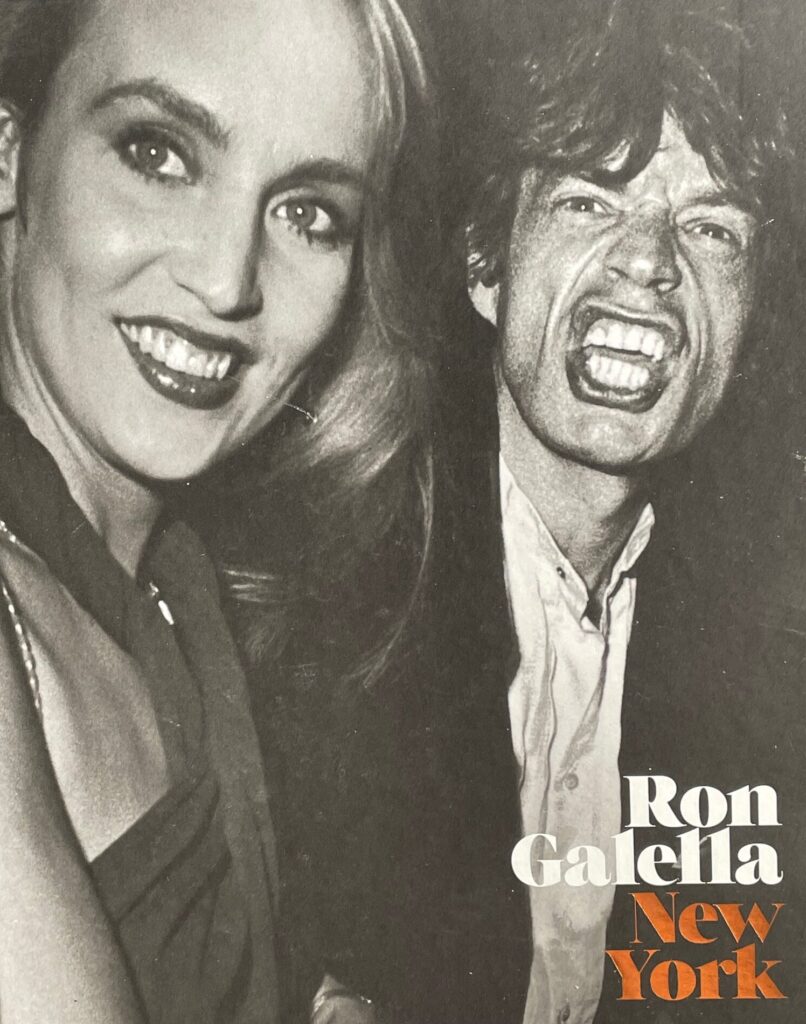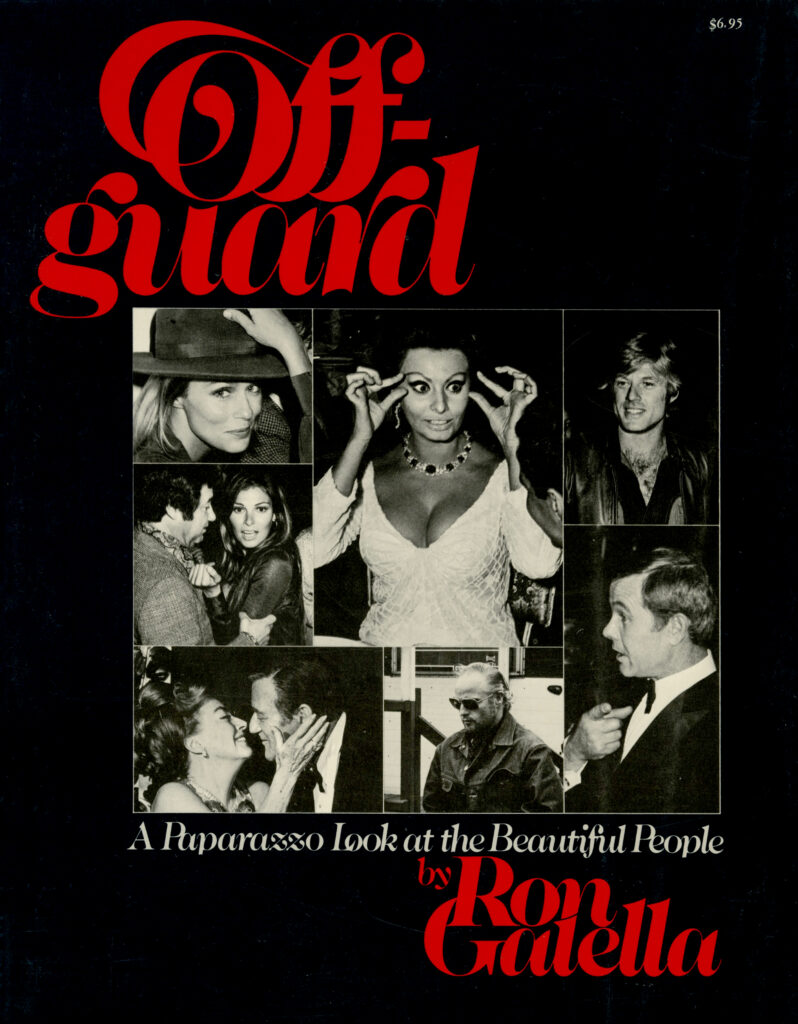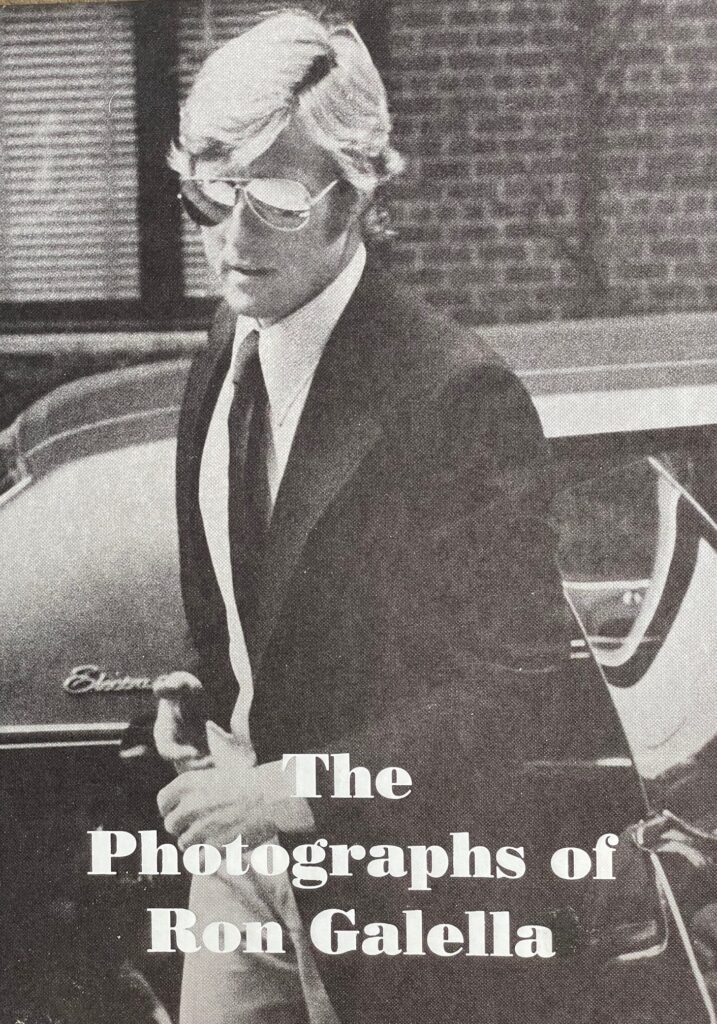(Out of Print)
“Jacqueline is the most beautiful book ever published about the world’s most glamorous woman,” the book description exclaims.
Perhaps not surprisingly, Ron Galella’s first book is devoted to one of his most photographed subjects, Jackie Kennedy.
Published just five years into his full-time celebrity photographer career, the images represent the best of the many photographs taken over several years in the late 60’s early 70’s of then, Mrs. Onassis.
The book contains hundreds of photographs of the former First Lady and her family doing normal things – picnicking, building snowmen in Central Park, playing tennis, shopping and vacationing.
Ron recounts the various lengths and obstacles he faced in pursuing his subjects, including his traveling across Europe to the Greek islands., sharing methods, often humorous, needed to capture these intimate images.
“You need some basic disguises for some situations so celebrities don’t always recognize you. I have my sunglasses, pipe, hippie wig, salt and pepper wig, Afro wig and several mustaches,” Galella writes.
For five years beginning in 1969, Jackie rented a seven-room, grey clapboard house on an estate in Peapack-Gladstone, N.J., 37 miles from Manhattan, a country get away that her and her two children would utilize on the weekends including time quietly observing the anniversary of her husband‘s assassination.
Ron made several trips out to the refuge and the touching photos of John-John’s participating in a local school’s annual horse benefit show are a highlight.
“It was the only completely pleasant afternoon I ever spent photographing Jackie,” he writes.
Apparently, Galella wasn’t the only outsider in the leafy town. He recounts that one evening after dinner in town, Jackie’s husband, shipping magnate Aristotle Onassis was picked up by the local police in Peapack and questioned at the station house after he was observed having the audacity to walk around and apparently looked out-of-place strolling in the small town (He was released after Secret Service vouched for him).
The book’s publication comes months after his much-publicized initial court case and contains musings regarding his legal battle.
Anecdotes include his legal teams’ unsuccessful efforts to serve a subpoena on a fellow photographer to secure a witness for Galella’s defense at the 1972 Godfather premiere.
The photos are supplemented with Galella‘s own story of how and why he had become so compelled to photograph Jacqueline as well as his own biographical history of how he got into the business.
The last image in Jacqueline shows Aristotle Onassis and Jackie in front of the famed NYC French eatery, La Côte Basque.
Despite the star wattage of the main subjects our eyes are also drawn to the left side of the frame. Interestingly we see Ron with a large grin on his face causally standing off in the corner in the background, camera dangling from his neck, hands in pockets, uncharacteristically observing the action not photographing it. (Certainly, his facial expression is not related to his stylish plaid jacket, and wide striped tie he is wearing!)
Ron’s presence in the photo is not mentioned in the caption. The reader is expected to notice him. And we do.
The caption reads, “ I don’t photograph Jackie anymore I leave that now to other paparazzi.”
He later abandoned that position, a decision that would find him embroiled in yet another legal battle with her less than a decade later (His later photos of her through 1981 would later be included in his 2013, 400-page, gilded tome, Jackie: My Obsession).
The striking photo outside La Côte Basque was taken on January 1, 1973 by Sasa Wargacki, wife of photographer Tom Wargacki, a friend and colleague of Ron’s. The image was used as the opening image in the August 2022 Esquire Magazine article, “La Cote Basque, 1965,” by Truman Capote from his unfinished novel Answered Prayers. The article was originally excerpted in the magazine in 1975.
Ron’s attention and tactics hardly endeared him to Ms. Onassis, however the work published in Jacqueline and viewed now in historical context, provide an important document of one of the world’s most famous families and enduring historical figures in American culture during that period.
“….people will be shocked by the beauty and dignity of the photos in the book,” the book description opines, perhaps anticipating the public’s reaction so soon after the legal trial.
Some did not like his methods, but the results speak for themselves.
“Ironically, the very photographs that Mrs. Onassis resisted were the ones that defined her as an icon,” top fashion designer Tom Ford wrote in 2002 in the Introduction of, The Photographs of Ron Gallela. (Greybull Press).
“Much of what we came to love about Jackie we discovered through Gallela‘s candid images. 30 years later, they continue to have a mystique that no formal studio portrait can match,” Ford says.
Published: 1974
Publisher: Sheed and Ward, Rowman & Littlefield Publishers: 200 pages






